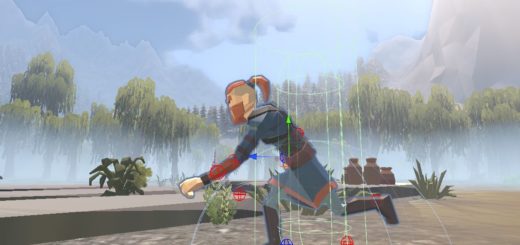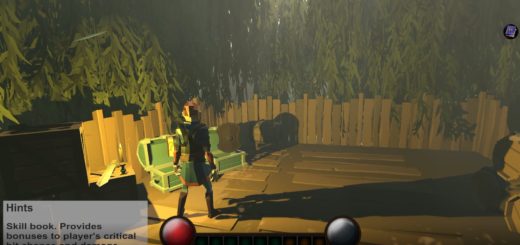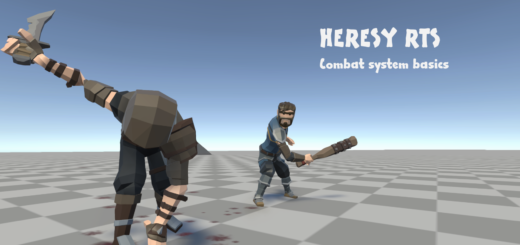Heresy RTS combat system inspirations
In a recent article I revealed my new project, an RTS/RPG hybrid. Strategy games, and RTS-es in particular, rank among my favourite game genres. I started my adventures with strategies in the early nineties with games like Centurion, Fantasy General, Command & Conquer and Warcraft: Orcs and Humans. I also played tabletop war games and boardgames. My love for strategies persisted even through the relative “dry-spell” of the 2010s. Many of the games I played over the years boasted really cool features which I wanted to see elaborated upon or translated into different contexts.
This is the first of a series of articles which will present the features of the prototype. Today we are starting with the combat system and its inspirations. Combat is, I believe, the most hallmark system of Heresy. It draws inspiration from several seemingly distant branches of the RTS genre.
Combat system inspirations
Below I would like to describe several features that inspired me. But first, here is a video of multi unit combat which shows some of the features discussed later in the article.
Dynamic, action-like combat
With a wide array of attack animations and hit reactions the real-time combat of Total War series is a golden standard for cinematic battles. In my opinion the series reached its peak of visual candy starting with Shogun 2. I always wondered if such a system can be adapted to a smaller scale where every soldier on the battlefield counts. When playing the Warhammer Total War real-time battles and watching multiplayer battle replays, I noticed that the most gripping moments would often come at the ending stages of battles. It is then that the individual soldiers from tattered units and beaten-up heroes decide the results.
The potential problem for small scale battles I predict would be the “gluing” effect of synchronized animations. When a unit plays an attack, hit or dodge animation it is effectively stuck in this animation for a few seconds, which makes microing less responsive. At the same time, the animations are very immersive. This also creates a “commitment” dynamic, when a player cannot simply expect a soldier to run around the enemies without any risk.
The prototype of the combat system that is already available supports the following features:
- Basic AI and behaviours like aggressive, ranged, passive and run away.
- Combat based on hit chance. Damage is calculated based on weapon, armor and unit stats.
- Varied attack-dodge-hit animations. Blood and hit reactions dependent on hit location.
- Single human player and multiple AI players and factions.
Physics and environment-based shenanigans
Meaningful physics has been tried and tested many times. Games like Men of War, Company of Heroes and Supreme Commander showed that specific implementations of realistic physics do have a place in the RTS genre. While full-scale destruction of Men of War is out of reach for this particular project, I do intend to use specific physics features in my game. These include ragdolls, blood and item physics, destructible cover. In addition, the game already calculates projectiles physically and the projectiles react differently based on target material.
Dynamic equipment
In most RTS and strategy games units come in a “single package”. As an example, Total War: Warhammer’s imperial crossbowman and handgunner have their stats “baked in”. In other, words the statistics are not derived from the weapon a unit wields. The player cannot put a crossbow in handgunner’s hands and make the handgunner behave like a crossbowman. This applies to most RTS and strategy games. If you took the Warcraft III editor and wanted to create an Orc Grunt with different weapons you would need to have different models for each grunt weapon variant. RTS games which allow for such dynamic switching include Men of War and Company of Heroes.
In the Heresy prototype I have already implemented dynamic weapon, armor and equipment switching. Dead units also drop their weapons, and player’s units can pick the weapons up. Whether every unit apart from the player’s character will be always able to switch weapons is a matter of testing. It may be necessary to turn the feature off for regular units. Managing every unit’s inventory may be cumbersome and potentially unbalanced. Nevertheless, the functionality is already there and working.
Summary
Combat system inspirations are not the only inspirations for Heresy of course. The first articles however will focus on the initial technical aspects that I already implemented. In the next entry I am going to discuss the basic combat mechanics and statistics.





Recent Comments